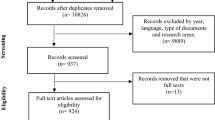Abstract
This paper attempts to present an analytical framework of analysis of problems relating to public systems. Current optimization models, which originated in the private sector, are not adequate to handle the complexity of the decision making processes in public policy analysis. The proposed model aims at lessening ideological debates over statements of goals, and it emphasizes policy selection through goal redefinitions where both goals and policies are formulated simultaneously. The model is based on an iterative process where consensus over policies is arrived at between the policy maker and the constituents of the public system. The principal feature of the model is that it incorporates political debates and bargains, and provides for the development of insight.
Similar content being viewed by others
References
Beckett, John A. Management Dynamics: The New Synthesis. McGraw-Hill Book Co., N.Y., 1971.
Chadwick, George. A Systems View of Planning. Pergamon Press, Oxford, 1971.
Charnes, A., and W. W. Cooper. Management Models and Industrial Applications of Linear Programming. John Wiley & Sons, Inc. N.Y., 1961.
Dimitrious, Basil, “The Interpenetration of Politics and Planning,” Socio-Economic Planning Sciences, Vol. 7, No. 1, 1973.
Drake, Alvin W., “Quantitative Models in Public Administration: Some Educational Needs,” in Analysis of Public Systems by A. W. Drake, R. L. Keeney, and P. M. Morse (eds.), The MIT Press, Mass., 1972.
Green, Bert F., “Introduction: Current Trends in Problem Solving,” in Problem Solving: Research, Method, and Theory by Benjamin Kleinmuntz (ed.), John Wiley & Sons, Inc., N.Y., 1966.
Kamrany, Nake M., “Economic Growth and Environmental Impact: Evaluating Alternatives,” Socio-Economic Planning Sciences, Vol. 7, No. 1, 1973.
Keeney, Ralph L., and Howard Raiffa, “A Critique of Formal Analysis in Public Decision Making,” in Analysis of Public Systems by A. W. Drake, R. L. Keeney and P. M. Morse (eds.), the MIT Press, Mass., 1972.
Lindblom, Charles E. “The Science of Muddling Through,” Public Administration Review, Vol. XIX, Spring, 1959.
-Lindblom, Charles E. and A. O. Hirschman, “Economic Development, Research and Development, Policy Making: Some Converging Views,” Behavioral Science, Vol. 7, 1962.
Mayer, Robert R. Social Planning and Social Change. Prentice-Hall, Inc., Englewood Cliffs, N.J., 1972.
Ruefli, Timothy W., “Shadow Models: Extensions of Management Sciences,” in Computer Simulation Versus Analytical Solution for Business and Economic Models. Gothenberg, Sweden, August 1972.
Schultze, Charles L. The Politics and Economics of Public Spending. The Brookings Institution, Washington, D.C., 1971.
Smith, David M. The Geography of Social Well-Being in the United States. McGraw-Hill Book Co., N.Y., 1973.
Tripodi, Tony, F. Fellin, and I. Epstein (eds.). Social Program Evaluation. F. E. Peacock Publishers, Inc., Itasca, Ill., 1971.
Author information
Authors and Affiliations
Rights and permissions
About this article
Cite this article
Said, K.E. A policy-selection/ goal-formulation model for public systems. Policy Sci 5, 89–100 (1974). https://doi.org/10.1007/BF00155720
Issue Date:
DOI: https://doi.org/10.1007/BF00155720



